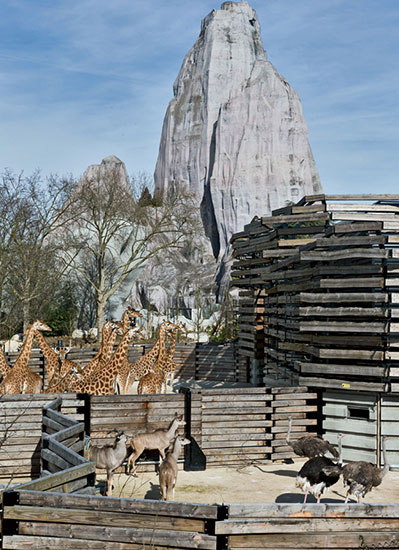Paris
Bernard Tschumi Architects
 |
| Photo © Iwan Baan |
When architect Bernard Tschumi was renovating a crumbling 1930s-era zoo on the edge of Paris, his design team faced challenges. After all, as the architect puts it, “A zoo is simultaneously a hospital, a prison, and a major restaurant—animals eat all the time.”
Tschumi decided that for the zoo's seven new structures— aviaries, a greenhouse, and visitor facilities—he would create architecture that would blend in with the preexisting man-made landscape and be respectful of its historic context. Furthermore, the architecture for all creatures, including humans, would follow the same concept. In the case of the zoo's Sahel-Sudan biozone, which houses ostriches, kudus, and giraffes, a zigzagging larchwood skin conceals corrugated-metal-clad technical facilities; the space between these walls forms a hidden passageway for zookeepers. A café follows a similar scheme, with the kitchens tucked away beyond the metal screens. The larchwood weathers to a soft gray, the same hue as the 80-year-old 200-foot-tall Grand Rock, which looms above.
During construction Tschumi notes, the elephant in the room turned out to be the giraffes in the pen. “It's not so easy to transport a giraffe,” he says, explaining why they remained (the other critters were relocated). “Amusingly enough, they watched us through the whole construction phase.”

Post a comment to this article
Report Abusive Comment